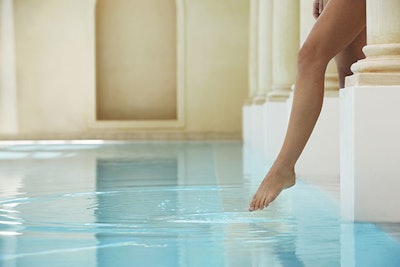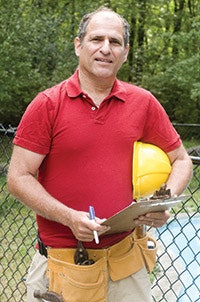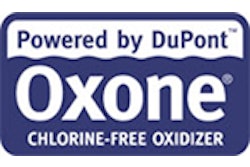
There are two characteristics one finds in all heater customers — they love warm water and they can afford it. If they also want to be able to heat up quickly, they're going to be gas heater people, because nothing raises the temperature of water faster than gas.
But like other components around the pool, gas-fired heaters have modernized dramatically in the last decade, so if you haven't been keeping track, you may be surprised by some impressive developments. The units on the market now are much more efficient, easier to operate and install than you may remember.
Exactly a year ago, the U.S. Dept. of Energy mandated that all heaters sold must have a thermal efficiency of at least 82 percent. Compared with heaters from decades before, and especially compared to older heaters in the field, that's a very good number.
Heaters with outdated technology and worn out, corroded or sooted heat exchangers are likely operating at low efficiency, making them slow to respond to input commands. For customers who expect quick results, this is motivation to upgrade.
Efficiency has always been a core concern for consumers, but really, notes Steve Gutai, director of trade marketing for Zodiac Pool Systems, "there are three main groups affected by the improvements in modern heater design — consumers, builders (who will spec the heater on new construction) and service technicians (who will sell replacement heaters and service them periodically)." Each is crucial to the heater market, and each has its own criteria for what makes a great heater. New models are addressing these criteria and thereby boosting their appeal.
Over the years, with these three groups each registering their views and complaints with designers at equipment companies, heater technology has progressed smartly.
The new heaters are much smaller and lighter — much more compact. You used to need a small squadron to wrestle an old-style, gargantuan heater into position, but it is now possible to deliver and install a replacement heater using one person of ordinary size.
But due to design improvements, the smaller package packs a more powerful punch in terms of heat transfer.
As with cars, the engineering effort to raise efficiency has focused on combustion — getting control of the fuel and air mixture to create a more perfect burn. Gutai describes the three types of heaters typically sold in the residential market:
"The first and simplest is the atmospheric-burn heater, which features a combustion chamber that is open to the ambient air. The second type is called fan-assisted. These feature a blower or fan that forces air up through the heater, much as a turbocharger does for a car engine, giving better control of combustion," he says.
"The third type is called induced draft, negative pressure, sealed combustion heater. This type of heater has a blower on the front end of the chamber, and it sucks in air through a venturi, which creates a mild vacuum on the gas line, mixes the gas and air, and blows it down into a sealed chamber for combustion. This type of heater offers some regulation of gas intake, so the technology is a bit more forgiving when you have low gas flow conditions."
Everybody Wants One
These substantial improvements in efficiency and installation notwithstanding, plug-and-play automation may be the biggest payoff in modern heaters. New heaters plug right into the mobile pool and spa automation system, which is becoming recognized as a true killer app. The ability to heat up a spa (most pool heaters also heat an attached spa) from a remote location so it will be ready and waiting has caught the homeowner's fancy.
"Everybody wants this now," Gutai says. "And it's really easy for the installer to set up, you just plumb the heater on the pad, and instead of the old way of doing it, where you just broke into the low-voltage circuit with a fireman's switch or an on/off control, the heaters out on the market now offer something called RS485, which gives the heater the ability to communicate with the home or swimming pool automation."
"So you're able to see the diagnostics and set heating from inside the house. They set up a macro program, so you just have to hit one button. That's what people want."
Builders or contractor/installers

Or if I am putting it indoors, I want to be able to easily vent the heater, usually through a sidewall.
Service technicians

After it's installed, and I'm in service mode, when I have to get into the heater to exchange components, I need to have access. Don't turn me into a contortionist just to get a tool into the right position inside the heater.
Consumers

I want it to be quiet so I don't hear it, and I want it to be small so it doesn't dominate the view.
I don't have an opinion on brand, I just want the heater to make the water warm within a certain period of time, and I trust the pool professional to provide that.
I use my heater in conjunction with a spa, but I don't walk out to the equipment pad behind the bushes to turn on my heater and ramp up the pump to get the jets going — my spa is tied in with my automation system, so I just touch a button on my smartphone.
Coming Up To Speed
Coinciding with improvements in gas-fired heating efficiency has been the variable speed pump movement, and the two have achieved some synergy. Being able to precisely control the flow of water through the circulation system improves heating efficiency along with pump energy efficiency.
"It's been a big bonus to be able to set the flow on the variable speed pump to exactly what the heater needs," says Darrin Dillree, Pentair territory service manager for Northern California. "You're giving the heater the exact flow to get the proper heat transfer from the heater to the body of water. So not only is the heater being efficient, but we're also being efficient in getting that heat to the pool. So when you couple everything together, a new high-efficiency heater with automation and a variable speed pump, you can really get a tremendous savings of energy."
The proper flow rates necessary for different components of the system — filtration, the heater, perhaps an automatic cleaning system — are all programmed into the pump. "For normal filtration, we run a flow rate just high enough to keep the skimmer working, for maybe 10 or 12 hours," Dillree says. "In there, we run a higher speed for the time needed to operate the pool sweep when it comes on, and if heating is involved, that's also going to need a higher speed. Each manufacturer likes a certain amount of flow through the heater — we like 70 to 80 gpm. And that happens automatically. When the temperature falls below your set temp, the system calls for heat, the heater comes on, the pump ramps up, and it heats until the desired temp is met. Then the heater shuts off and the pump ramps back down to filtration speed."
Information for this article was provided by Steve Gutai, director of trade marketing for Zodiac Pool Systems, and Darrin Dillree, Pentair territory service manager for Northern California
Comments or thoughts on this article? Please e-mail [email protected].












































